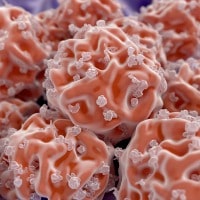Stem cells are a source of great hope for effective treatment of diseases or injuries that have previously been difficult to treat. The subject of stem cells has also been surrounded by considerable controversy; especially pertaining to the harvesting of embryonic stem cells. In spite of the moral objections of those people who support the sanctity of life from inception, stem cell research continues to offer promise for successful treatment.
Stem cells are present in both humans and animals, and they are specialized in that they provide what amounts to an internal repair system with the ability to continuously divide and renew through cell division. Scientists first discovered embryonic stem cells of mice in 1981, leading to a method of collecting human embryonic stem cells in 1998. The human embryos used in this research were left over from in vitro fertilization procedures and were used with the specific permission of the donors.
At this point, there are three different types of human stem cells; embryonic, adult and induced pluripotent stem cells, or iPSCs. Researchers discovered in 2006 that certain specialized adult stem cells could be reprogrammed to assume a state similar to embryonic stem cells.
- Embryonic stem cells (ESC) – are grown in a laboratory using cells harvested from 3 to 5-day embryos that were initially created during an in vitro fertilization procedure. These cells are then grown over a minimum length of time to increase their continued growth once used as therapy for a disease or injury. Some of the advantages of ECS over adult stem cells is their ability to differentiate into specific cell types such as muscle, blood or nerve cells. While stem cell research is ongoing, embryonic stem cells could potentially be used to treat:
- Parkinsons
- Diabetes
- Heart Disease and stroke
- Injuries and many other health conditions
- Adult stem cells – are also referred to as tissue stem cells. They are not pluripotent like embryonic cells, but are multipotent. This means adult stem cells can only be used to treat the area they have been harvested from. For example, blood stem cells can only differentiate into blood cells, skin cells can only replace skin cells and neuron cells must be used to treat brain diseases. Replacing damaged cells of other organs of the body is also possible through the same procedure, but these stem cells are limited in the number of cells that can be grown.
- Induced Pluripotent stem cells – are adult stem cells that can be reprogrammed to a state similar to embryonic stem cells. Much more research is needed to advance the technology of these iPSCs, but this type of stem cell shows much promise for future stem cell therapy. One very positive aspect of iPSC development is the possibility that the need for embryonic stem cells may be eventually eliminated. The final goal of research involving iPSC is to develop a procedure that will enable this type of cell to treat a wide variety of health conditions.
- Cord blood stem cells – are collected from the umbilical cord after childbirth. These cells have been successfully used to treat blood-related cancer and blood disorders that are genetic.
Stem cell research shows much promise for the treatment of common diseases such as spinal cord injury, burns, stroke, heart disease, diabetes and Parkinson’s disease. Scientists have not yet perfected dependable procedures that will ensure the correct differentiation of stem cells. The controversy surrounding stem cell research and therapy is ongoing, and it is hoped that the process will eventually be available to treat health problems that are currently difficult to resolve. Although research has been ongoing for nearly 20 years, health professionals are hopeful that stem cell therapy will be the answer to some serious health problems.




